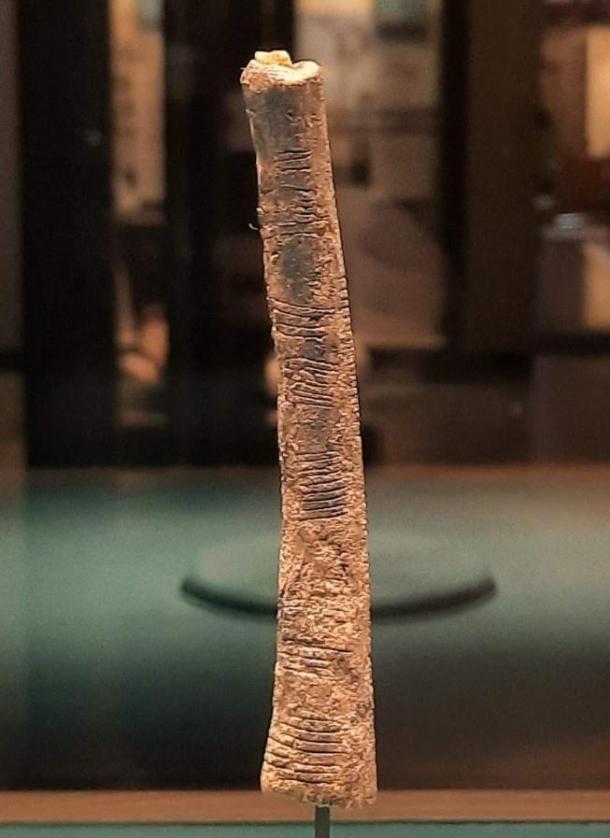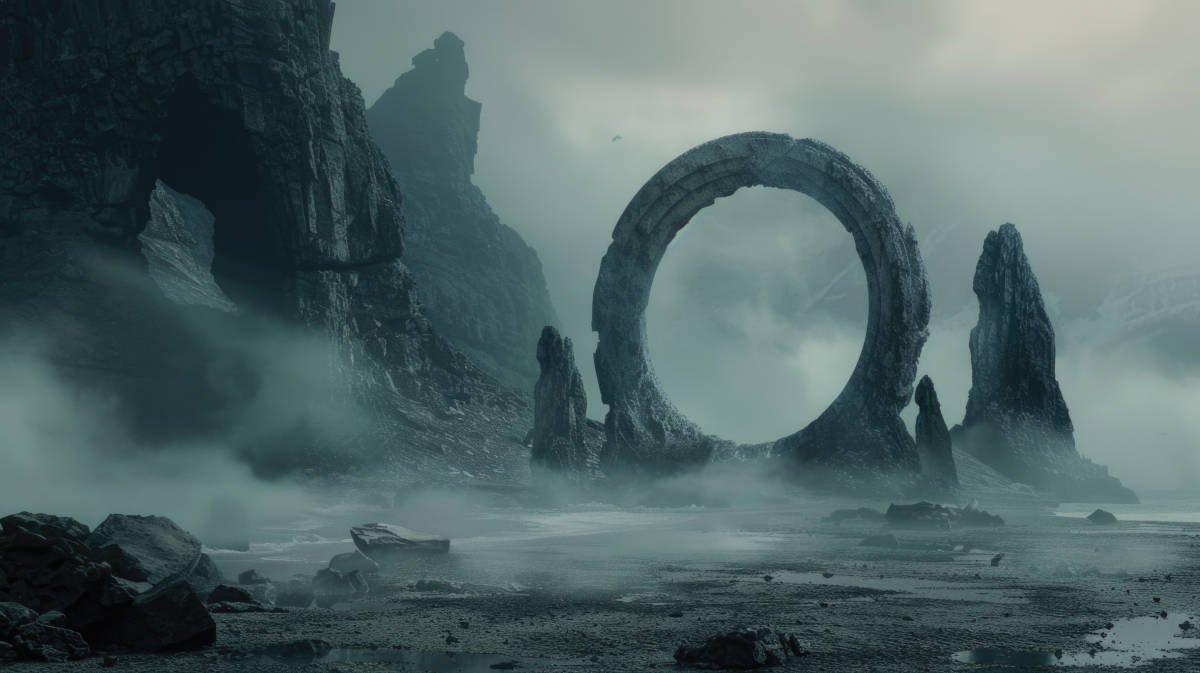When we think of our most distant ancestors, and prehistory in general, we often think of primitivity, of crude archaic humans who had no mastery over everything and were left to bare survival. We think of stone tools, crude loin cloths, no mastery of speech, we think of cavemen and clubs, and thousands of years of utter primitivity. And it is true that mainstream historical narratives often depict early humans as such, living a stagnant way of life for countless centuries. But was it truly so? Have we underestimated our prehistoric predecessors and marred their possibly great legacy? To answer this we need to take a different look at this distant time in history, and to start observing prehistoric man through an altogether different lens.
The Prehistoric Survivors: Man Climbing the Evolutionary Ladder
Modern historiography often tends to unjustly put the prehistoric humans into the corner, painting them in a stark and unflattering light, and dismissing them as primitive and unevolved. In the simplest terms, it presents these humans as technologically stagnant, when compared to the evolved humans that came later, ushering technologies such as agriculture, animal husbandry, statehood, and writing. But could it be that these ancient humans were more advanced than we are led to believe? Did they have a worldview and societies that were much more evolved than we acknowledge today? New evidence appears that suggests that it might be so after all.
To better understand the flow of human evolution, we must take into account the sheer scale on which it occurred. The earliest writing systems occurred some 5,000 years before present, and that marks the beginning of recorded history. But for hundreds of thousands of years before that, humans lived a different lifestyle, as hunters and gatherers, always moving across the land and living in small, closely knit societies. Such a simple life went on for a very long time, until the beginning of the Neolithic Revolution, roughly 12-11,000 years ago. This was the beginning of what led to complex societies, first cities, agriculture, hierarchies, and eventually – warfare and centralized government. But if the life of these early humans was simple, does it mean that it wasn’t sophisticated?
The problem stems from the modern understanding of the word “advanced”. Today, we are almost obsessed with being “advanced”, even when it hampers us in certain ways. We connect this advancement with technologies and modern innovation but fail to understand that there were numerous ways to advance, even in prehistory. Early humans certainly advanced as well, for their time, in social organization, in adapting to their environment, creating better tools and hunting tactics, and honing their cognitive abilities. And as we take all this into account, we begin to understand that they were much more intellectually and culturally developed than is usually thought.
The Old Masters of the Land
One of the foremost aspects in which ancient humans were more advanced than first thought is exploration and navigation. We must remember that with the appearance of the first anatomically modern humans, people began spreading all across the globe, discovering new hunting grounds and new bountiful lands where man never before set foot. But what about the seas? Ancient humans didn’t shy away from these, as there is ample evidence of prehistoric sea travel. Yes – our ancestors were skilled mariners. Scholars commonly agree that, for example, Australia had been colonized some 65,000 years ago. This feat required arduous sea voyages and the crossing of hundreds of kilometers of open sea. This implies that some early societies had a rudimentary understanding of oceanic navigation and sailing as well. Comparable is evidence from Micronesia and the Solomon Islands, which indicates early long-distance voyages across the Pacific, when new islands were discovered and settled.

Polynesian ancient navigators. Ancient stories tell of a guiding light aiding them in their travels. (Public Domain)
Of course, early hunters and gatherers traveled overland a lot. But there is also evidence that they traded with other small communities, perhaps exchanging the excess of goods that they accumulated, or items like furs, antlers, and other amenities. This indicates the existence of prehistoric trade routes, such as the Jade Road in modern-day China. Even in that prehistoric age, humans had an eye for decorations and valuables, and exchanged items such as seashells, jade, and obsidian over long distances. Across Europe there are many archaeological discoveries from prehistory where individuals were buried with luxury items and materials that originated far from their birthplace, suggesting long distance trade.
All of this indicates that our distant ancestors were well aware of the great expanse of land all around them, and that it wasn’t all that easy to conquer. And the fact that they decided to conquer that land, to explore it, and settle it, is enough to tell us that they had a certain understanding of land navigation and survival. In short, these early humans had established an imposing level of trade and communication with other early societies – a level that has not been fully appreciated by mainstream history.
Astronomy and Mathematics in the Dawn of Civilization
For thousands of years, ancient humans looked up to the skies. They observed the heavens above, the stars and all the celestial bodies, and knew that there was something more there than meets the eye. And now, there appears ample archaeological evidence that indicates that these people had an imposing level of knowledge about celestial bodies, mathematics, and astronomy. From the solstice-aligned megaliths of ancient Stonehenge, all the way to the complex astronomical circle of Nabta Playa in Egypt, it is clear that the early humans had a deep understanding of the celestial movements. And what is more, it is clear that these early humans knew much more than the celestial bodies – they possessed advanced mathematical knowledge as well.

Nabta Playa “calendar circle”, reconstructed at Aswan Nubia museum. (Raymbetz/CC BY-SA 3.0)
One of the oldest items associated with the ancient grasp of mathematics is the Ishango bone, excavated close to the border between modern Uganda and Congo. Dated to some 20,000 years before present, it is etched with numerous small lines and is believed to be a tally stick. However, many scholars consider this item as evidence of primitive mathematical calculations, which indicates some understanding of simple arithmetic and prime numbers. A similar discovery was made with the Lebombo bone, another relic – dated to some 40,000 before present. It too was incised with a total of 29 notches and could indicate that women in prehistory had an understanding of lunar phases. The idea is that they had to keep track of their menstrual cycles, which required a lunar calendar.
It is these early mathematical items that indicate that our distant ancestors were much “smarter” than is generally thought. Not only were they capable of abstract thought but had the ability to apply simple mathematical principles to their understanding of the natural world. This challenges the common view that mathematics emerged in the first civilizations, and in turn tells us that humans had a very long tradition of intellectual development and evolution.

Bone tool and possible mathematical device that dates to the Upper Paleolithic era discovered in Ishango (Joeykentin/CC BY-SA 4.0)
The Eye for Art
Perhaps the most interesting aspect of ancient human thought is the need for artistic expression. This is the clear evidence that these peoples were not simple primitive brutes, but complex human beings with needs and desires of their own. Throughout distant history, people created art in various forms, from truly stunning cave paintings, all the way to painted hands and sculptures. A notable example is the Lion-Man of Hohlenstein-Stadel, also known as the Löwenmensch. Dated to some 41,000 years before present, this remarkable figurine is made of mammoth ivory and is carved with stunning and realistic attention to detail.

“Löwenmensch figurine, found in the Hohlenstein-Stadel cave of Germany’s Swabian Alb and dated at 40,000 years old, is associated with the Aurignacian culture and is the oldest known anthropomorphic animal figurine in the world.” (Public Domain)
The Löwenmensch is 31.1 cm (12.2 in) tall, 5.6 cm (2.2 in) wide, and 5.9 cm (2.3 in) thick, and represents a man’s body with the head of a powerful cave lion. It is noted for its great realism, and it was likely a very important ritual item for the peoples who created it. Discovered deep in the ground within a cave in the Swabian Juras, it was likely related to shamanic practices of prehistoric peoples. The cave lion was a very imposing predator in this time, and tackling it was nearly impossible. This likely made the animal revered amongst these peoples, and the figure likely had ritual symbolism. And the perfection with which it was created indicates that even 40,000 years ago, humans had advanced capabilities and a desire to express themselves artistically.
Another great example of this ancient art is the “Sorcerer” cave painting, discovered in the Cave of the Trois-Frères, in Ariège, France. Likely painted in 13,000 BC, it shows a man’s body with the head of a stag, complete with lavish antlers. Scholars agree that the painting likely represents a shaman, or a “sorcerer”, perhaps performing a ritual that would ensure a good hunt. Others, however, compare the painting to the later religious figure of the “Master of Animals”, and thus consider it the first painting of a deity in human history. Nevertheless, this stunning image is the clear example that our ancestors were not simple brutes – but knew how to express themselves through art as well.
But perhaps the best example of how artistically-inclined our ancestors were, is the set of stunning cave paintings discovered in Chauvet Cave in France. Made some 35,000 years ago, these paintings are amongst the best known in the world. Drawn with such stunning realism, they depict numerous prehistoric animals, many of which were hunted by the people of that time. Rhinos, lions, deer, and bison are painted in great numbers, all with exemplary attention to detail. That some person, 35,000 years before our time, took up a charcoal pen and set about creating this masterpiece is proof enough that humanity was definitely more advanced in prehistory than is commonly believed.

Replica of the painting from the Chauvet cave, in the Anthropos museum, Brno. The original art is approximately 31,000 years old, probably Aurignacien. (Public Domain)
Rethinking Prehistory
As we dig deeper into the discoveries from the ancient past, it becomes increasingly more evident that ancient peoples were quite advanced. But the fact that they lived truly simple lives, connected to the nature around them, somehow presents them as primitive and unevolved. This is, certainly, a wholly wrong mindset, and needs to disappear.
We need to change our definition of the word “advanced”, rethink what it truly means, and reconsider the lives of prehistoric peoples. Only then will we realize that these were societies living in the truest form of human existence, a part of nature around them and at peace with the hardships with which they were presented. And at the end of the day, observing our own lives in this modern age, we need to ask ourselves: Are we truly the advanced ones?
Top image: AI Representation of a stone stargate, hinting at ancient advancement. Source: Alena/Adobe Stock
References
Brooks, P. 2016. Prehistoric Peoples: Discover the Ancient World of the First Humans. Anness Publishing.
Gräslund, B. 2005. Early Humans and Their World. Routledge.
Joseph, F. 2013. Before Atlantis: 20 Million Years of Human and Pre-Human Cultures. Simon and Schuster.





